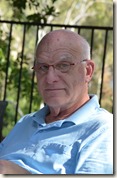Telemedicine Can Cut Health Care Costs by 90%
by Vijay Govindarajan
Vijay Govindarajan is the Earl C. Daum 1924 Professor of International Business at the Tuck School of Business at Dartmouth. He is coauthor of Reverse Innovation (HBR Press, April 2012).
The title for the post is a bold one. It is a vague, sweeping declaration, certainly one we would all like to believe, an it grabs one’s attention to see how the conclusion has been derived by Dr Govindarajan.
If you've not yet heard of telemedicine or think that it's not a great way to deliver quality health care, you may want to read this. Telemedicine, made possible by the availability of mobile networks, is revolutionizing health care. But not in the U.S.
You have to look to India, where telemedicine is already widely used in the delivery of health care — and is saving lives even in the most rural corners of the country. Nephrologists have developed a system that allows for peritoneal dialysis at home in lieu of the more expensive hemodialysis with expensive devices in dialysis centers or in hospital. At home PD requires no vascular access ports, pumps or technical personnel. It can be accomplished by a trained patient with minimal if any supervision.
Dialysis Center At Home Peritoneal Dialysis
The major barrier in the acceptance of PD is concern that patients won't have proper access to a doctor — especially in geographically dispersed countries such as the United States. As a result, less than one in twelve ESRD patients are treated with PD. The net result? It costs over $170,000 to treat patients with ESRD in the U.S., using the more expensive HD. HD requires a network of redundant hemodialysis centers scattered within travelling distance for a procedure necessary several times a week.
It doesn't have to be this way. The "distance" between the patient and the PD unit can be overcome, at a dramatically low cost, by efficient use of the internet, mobile phones, and a strong home visit protocol. To quote Dr. Nayak: "Our success can easily be replicated in the U.S. Conservatively, even if 15% of ESRD patients choose PD over HD, cost savings for Medicare and Medicaid will run into many millions of dollars every year."
After signing into the (secure) hospital website, patients and caregivers are directed to a personalized home page from which they can use the site to enter and share information. Health complaints made by patients receive immediate response. Remote monitoring is augmented by a home visit protocol that ensures that each PD patient's progress is followed up by a well-trained clinical coordinator (CC) on a regular basis. The CCs are trained to follow a set protocol and are equipped with a standardized checklist for a step-by-step assessment of patient well-being during each visit. All this information, together with a brief summary of the patient's most current laboratory results, is conveyed to the nephrologist by SMS from the patient's home. The CC is instructed to wait until the nephrologist responds (usually within 15 minutes), and then to counsel the patient accordingly. CCs also assess and advise patients on nutrition, psycho-social well-being, and physical fitness and rehabilitation levels.
Dr. K. S. Nayak, Chief Nephrologist at the Lazarus Hospital in Hyderabad, India, and his team are able to treat ESRD patients using PD, supported by mobile phone short messaging service (SMS), inexpensive digital cameras, and the internet to address patient accessibility issues.
The hospital retrospectively analyzed 115 rural patients who had started PD using this remote monitoring technology. Amazingly, rural patients performed well on PD and had significantly better survival rates than did their urban counterparts.
What is the primary driver of this system-wide inefficiency and cost? Most health care providers would agree that it is physician "mindset:" higher physician reimbursement for HD than PD, and concerns about accessibility in a geographically vast country contribute to historically low use of PD in the U.S.
Author comments: Gary M. Levin MD
In this now Patient-Centric health model in the U.S. a driving force for P.D. should be patient demands for quality of life issues and cost.
Primary care physicians should encourage nephrologists to make peritoneal dialysis a predominant form of dialysis if indicated. In the coming changes in reimbursement not based on procedures, this may become a reality. Most patients on ESRD (end stage renal disease) programs are already funded by a separate Medicare administrative system. Prior authorization for HD may become a routine to select HD in lieu of HD.
The "distance" between the patient and the PD unit can be overcome, at a dramatically low cost, by efficient use of the internet, mobile phones, and a strong home visit protocol.
To quote Dr. Nayak: "Our success can easily be replicated in the U.S.
Ref: Health 2.0 News




![screen-shot-2011-12-07-at-1-54-51-pm[1] screen-shot-2011-12-07-at-1-54-51-pm[1]](http://lh4.ggpht.com/-pByQMPdr0iA/T5DW9GU7gCI/AAAAAAAAEYE/xRotiCV58vY/screen-shot-2011-12-07-at-1-54-51-pm%25255B1%25255D_thumb.png?imgmax=800)






